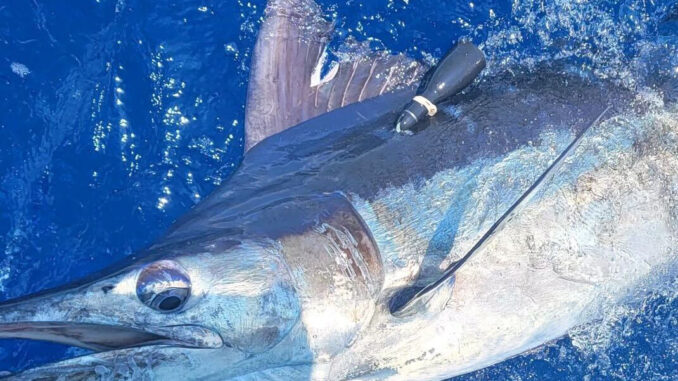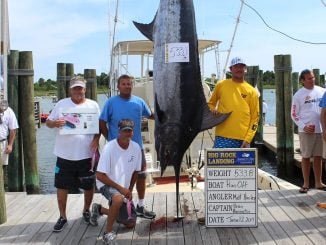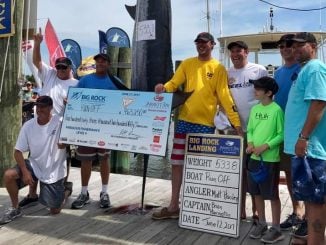
A local vessel has made International Game Fish Association Great Marlin Race history thanks to the blue marlin it tagged in 2022.
Waste Knot, a 67-foot sportfisher owned by the Poole family, tagged the marlin as part of the 2022 Big Rock Blue Marlin Tournament, and the fish ended up swimming a straight-line distance of 4,149 nautical miles from the East Coast of the U.S. to the coast of Brazil.
This marked not only the longest journey for the 2022-23 Great Marlin Race, but it was also the fifth-longest recorded distance traveled by a billfish in the program’s history and third longest by a blue marlin.
“Following deployment, the marlin traveled east into the North Atlantic and then turned south traveling in a directed path towards the equator,” said IGFA Conservation Director Bruce Pohlot. “Just north of the equator, the blue marlin slowly moved west towards Brazil and then turned south again, crossing the equator. The fish then followed the coast south for another month before the tag popped off near the southern border of Brazil, off Sao Paulo.”
According to Pohlot, Waste Knot’s tag surfaced on April 7, 2023, after reaching the full programmed deployment period of 240 days.
Over those 240 days, the fish traveled a total estimated distance of 7,819 nautical miles. It spent approximately 60% of the deployment within 33 feet of the surface where the water temperature ranged from 75 to 84 degrees. Deeper dives ranged between 82 to 492 feet where the water temperature varied from 57 to 84 degrees.
The deepest dive recorded occurred in mid-January to a depth of 1,070 feet where the water temperature was 54 degrees, the coldest water encountered during the deployment.
Waste Knot’s marlin also helped shed new light on ongoing research, specifically on unprecedented migration patterns.
“Waste Knot’s fish reached 25 degrees south in the South Atlantic, the farthest south recorded by the IGMR for a blue marlin tagged in the North Atlantic,” Pohlot said. “Both the winning fish and the second-place fish, which was also a Big Rock 2022 tag, traveled through a blue marlin hotspot, an area between the equator and 10 degrees north where blue marlins tagged in other locations, such as Bermuda and the Bahamas, have also traveled to. The hotspot is potentially a warm water area for feeding in the winter months.”
The IGFA Great Marlin Race is a research and conservation initiative that supplies recreational fishermen with satellite tags that can be used to tag caught billfish. Those tags then transmit data to Stanford University where researchers try to answer questions regarding billfish behaviors, migratory patterns and more.
“The IGFA Great Marlin Race was established to involve the angling community in citizen science,” said IGFA President Jason Schratwieser in a press release. “By coupling competitive spirit with conservation, we’re able to gather invaluable data that helps ensure the survival of these magnificent species. This year’s winners exemplify the heart of this program: a deep commitment to conservation and the betterment of sport fishing.”


